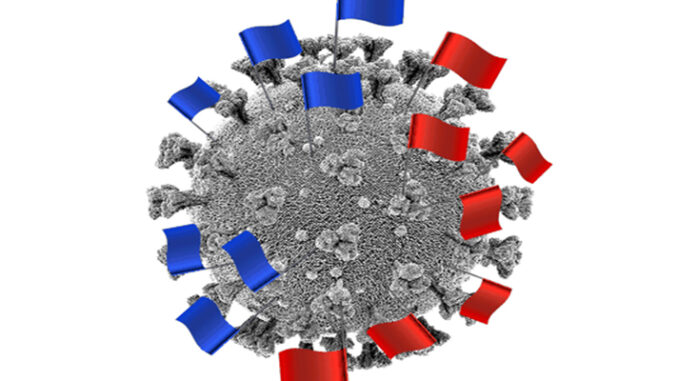
The pandemic could exacerbate a major Trump-reelection vulnerability: his weakness with urban and suburban voters.
by Ronald Brownstein
The coronavirus pandemic appears destined to widen the political divide between the nation’s big cities and the smaller places beyond them. And that could narrow Donald Trump’s possible pathways to reelection.
In almost every state, the outbreak is spreading much more heavily in the largest metropolitan centers than in less densely populated areas, even when the figures are adjusted on a per capita basis, according to a new analysis by the economist Jed Kolko provided exclusively to The Atlantic.
That pattern threatens to exacerbate one of Trump’s most conspicuous political vulnerabilities: his historical weakness in big metropolitan areas that are full of the minority and white-collar white voters most skeptical of him. From the Virginia governor’s race in 2017, to a sweep of suburban House districts in 2018, to the upset victory in Kentucky’s gubernatorial race last year, Democrats have consistently posted significant gains in these areas under Trump. The pattern continued in the unexpected Democratic victory this week in a highly contested state-supreme-court election in Wisconsin, a state that could be the tipping point in the 2020 presidential race.
The question for Trump this fall will be whether he can offset that weakness by matching or building on his dominant advantage in exurban, small-town, and rural communities. In Wisconsin this week, the GOP lost ground with those voters too, but by and large, polling still shows Trump holding a strong position among them. And because most rural communities are facing fewer cases of the disease so far, they may be much more receptive than big-city leaders and voters to Trump’s calls to reopen the economy as quickly as possible.
Epidemiologists and other medical experts disagree on whether the disease will ultimately besiege smaller places to a greater extent than it has so far. But there’s no question that it’s exacted its heaviest costs on major cities and their inner suburbs, including New York City, Detroit, Chicago, Boston, New Orleans, Los Angeles, and Seattle. “Densely populated urban areas are uniquely vulnerable to rapid spread of the virus,” said Larry Levitt, the executive vice president for health policy at the nonpartisan Kaiser Family Foundation.
The research conducted at The Atlantic’s request by Kolko, the chief economist at the employment website Indeed, quantifies that dynamic. Using a comprehensive county database maintained by The New York Times, Kolko calculated the number of coronavirus cases per million people within four different regional categories: those in large metropolitan areas of at least 1 million people; those in metros of 250,000 to 1 million; those in small metros with less than 250,000; and those in counties outside of metro areas. The consistent result was that, in most states, heavily populated areas are suffering many more cases per person.
Perhaps the most extreme example: The counties in New York State that fall under the largest metro category—New York City and its environs—have 12,454 cases per million residents. That’s compared with 3,304 in New York’s midsize metros, 1,556 in the smaller metros, and 915 in the nonmetro counties. In Michigan, where the Detroit area has been ravaged by the disease, the caseload drops from 4,787 per million residents in the largest counties to 1,000 per million in the midsize metros, 874 in the smaller metros, and just 346 in the nonmetro counties.
Similar patterns apply across a wide range of states. In Illinois, where the coronavirus has battered Chicago and its closest suburbs, the largest metro counties are experiencing seven times as many cases per person as the midsize metros, and more than eight times as many as the nonmetro counties. In California, where both the San Francisco and Los Angeles areas have been hit hard, the largest metropolitan counties have more than three times as many cases per capita as the small metro and nonmetro communities. A similar pattern is also evident in Ohio, Wisconsin, and Pennsylvania across the Rust Belt and North Carolina, Florida, and Texas across the Sun Belt, Kolko’s data show.
The few exceptions were states that have suffered large outbreaks in rural areas, such as Georgia (where the caseload in small places is as heavy as in the big cities) and Arizona (where the caseload in nonmetro counties has exceeded that of the biggest places).



